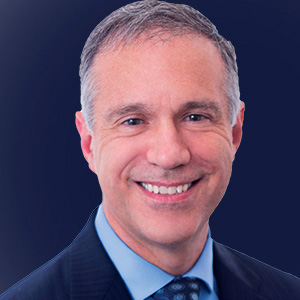THANK YOU FOR SUBSCRIBING

Enhancing POS Experience for Employee and Customer is the Key to Success
Christopher Davis, Chief Information Officer, the Tile Shop


Christopher Davis, Chief Information Officer, the Tile Shop
Christopher Davis has around three decades of experience in the industry, introducing numerous solutions and capabilities and replacing legacy systems. He began his career at PricewaterhouseCoopers (PwC) Consulting— acquired by IBM Global Services—as a consultant after graduating in computer science from Brigham Young University. Responsible for ERP transformation, he spent ten years at PwC implementing SAP solutions across the U.S. and globally. Later, he worked for various organizations such as Maytag, Whirlpool Corporation, Sleep Number Corporation, Express Oil Change & Tire Engineers and Mspark, leading IT teams and helping to rebuild IT capabilities. Recently, Davis joined as CIO at The Tile Shop, where he is enabling the company to undergo a significant technological, cultural, and organizational transformation, dealing with people, processes, and technology.
According to you, what are the common problems that retailers face with the point of sale (POS) systems?As the retail industry continues to transform and deal with rapidly changing technology, it requires omnichannel capabilities to meet consumers at their preferred channel. POS systems tend to be separate systems from a traditional ERP system or an e-commerce solution. The siloed nature of POS systems makes the integration of solutions the biggest challenge. The integration becomes more critical when paired with channel-less capability requirements to be where, when, and how the customer wants. Lastly, retailers often use outdated POS technologies because they focus on aspects that drive their revenue. They consider a POS system a transactional system, not a tool that can drive revenue. Yet, it impacts employee and customer experience. If POS experience is negative for employees, it affects their job satisfaction. Consequently, it influences consumers and, ultimately, constrains revenue.
The Tile Shop went through an SAP ERP implementation two and a half years ago. The implementation was challenging and required a great deal of effort to stabilize the solution. Employees still need to put significant effort into using the complex technology. In specialty retail, transactions are often more complicated than ringing up a bag of groceries or a pair of shoes. However, this complexity poses challenges to employees and, ultimately, to consumers. From the day I joined The Tile Shop, a key objective of mine has been to improve and simplify the POS experience for employees, making it easier for them to be trained or onboarded and execute the transactions. Another goal is to equip employees with easy-to-use tools that provide the right information to quickly service customers and improve our communication and follow-up.
Most importantly, we look forward to removing silos by implementing a unique solution that integrates our ERP, POS, and e-commerce systems. The solution will eliminate the need for data integration and synchronization by using a single database. It will free us from the challenges associated with historic technology constraints. The idea is to undergo a design and implementation phase by Q1 of the next year and ensure final rollout by the second quarter.
In your perspective, what would be the future of POS in the next 12 to 24 months?In my perspective, more organizations will continue to look for simplicity, more straightforward employee and customer experiences, and use of cloud capabilities. They will demand fully integrated capabilities to make it simpler to execute and support, truly removing the channel as a concept from the customer experience. There will also be an increase in alternative payment options and a simplification of payment processing. FinTech is bringing numerous capabilities to POS. So, the market will witness the improvement of payment processing as it is undoubtedly an aggressive growth area in the POS space. Apart from this, POS needs to be mobile in the store—even the traditional POS vendors are working to roll out mobile POS. Needless to say, companies that are not looking to improve the POS experience for employees and customers will certainly fall behind.
What piece of advice would you like to give to your fellow colleagues and the upcoming professionals?While driving change and solving business problems, look at people first, process second, and technology third. Technology is just a means to an end. And, if you can’t align it with the right people and processes, then it is just an expensive, failed technology. That’s why I encourage upcoming professionals to focus on aligning people and processes with technology. At the end of the day, POS is just a means to an end. So, if you don’t have a clear understanding of the business problem you are trying to solve, don’t start.












